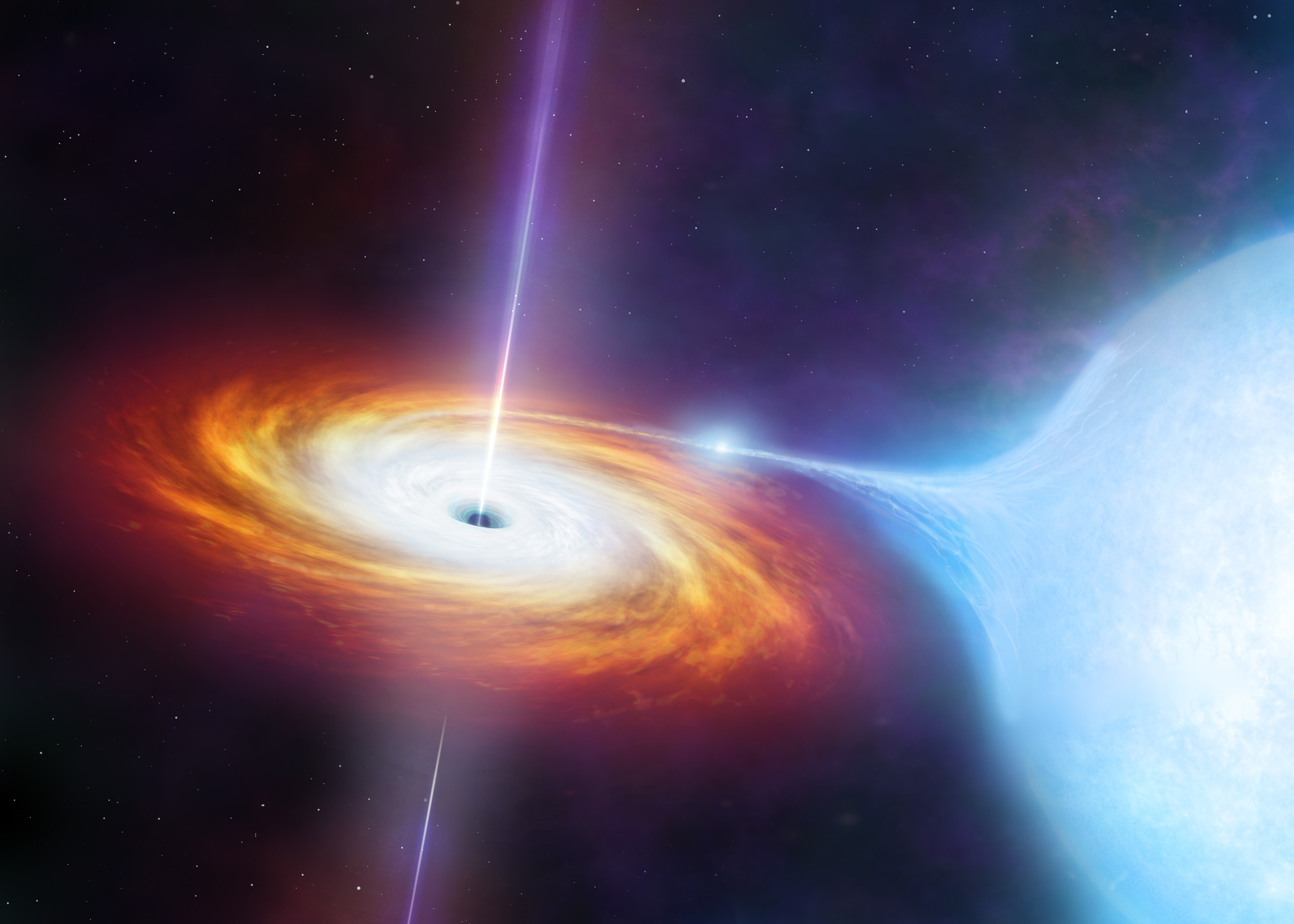Create a free profile to get unlimited access to exclusive videos, sweepstakes, and more!
Warped black hole is totally gnarly, and so is what messed it up
An X-ray transient that was one of the brightest such objects ever observed came out of a warped black hole.

Black holes are already warped enough considering all the weird phenomena associated with them, but this time, the warp was literal.
An X-ray transient (flash of light that appears in the sky temporarily) in the MAXI J1820+070 system, which spewed out an optical transient named ASASSN-18ey, was one of the brightest such objects ever observed. It was also one of the most confusing. Why was this light, emerging from an X-ray binary that consisted of a black hole and a small star, still active and blazing so brightly for months? Also, why was the black hole’s accretion disc so bizarre?
Astronomer Phil Charles of Southampton University in the U.K. was intrigued by this abnormal binary and wanted to know why it was behaving the way it was. It was possible that the intensity of light was coming from X-rays hitting the face of the donor star, but the brightening was switched on at the wrong time Something was off with the light curve. He led a study soon to be published in Monthly Notices of the Royal Astronomical Society.
“We know the precise positioning of the donor from optical spectroscopy that was performed on this system when the outburst had subsided, and the radial velocity curve gave the precise period and its phasing with respect to our line of sight,” Charles told SYFY WIRE.
After the blaze had faded, the disc became very faint, so most of the light Charles and his team measured through optical spectroscopy (which gauges the interaction of matter with electromagnetic radiation) had come from the star whose mass was being slowly devoured by the black hole in the system. There was a problem with the donor star’s light curve. What was especially strange about the light curve was that it curved in a way which would make it impossible for X-rays to bombard the star’s inner face. The entire disc was actually blocking X-rays.
If X-rays were being blocked from the inner face of the star by the disc itself and couldn’t reach it as evidenced by the light curve, maybe the transfer of mass from the star to the disc had something to do with it. Black hole accretion discs tend to flare as the black hole actively consumes material. However, there is a certain path the stream of mass going to the black hole has to follow as it is pulled in by inescapable gravity, and that also has to happen at a specific phase during which the two objects are constantly orbiting each other. This time, it didn’t.
“The maximum in our light curve moved in orbital phase by almost half the orbit, completely ruling out that possibility,” Charles said. “But if you have the right parameters in terms of disc size and X-ray brightness, the X-ray flux is so high that it can produce an instability in the disc.”
It is that instability that appeared as a mega warp. While warps like this have been seen in much larger X-ray binary systems, one this huge has never been seen in a much lower-mass system. As material in the accretion disc approaches the black hole, the heat gets turned up to about 17,500 degrees Fahrenheit, setting off an outburst of both visible light and X-rays. Optical light (which depends on that heat to be visible) dims with the fading of the X-ray outburst.
The X-ray flux in this system was so overwhelming that it irradiated the disc to the point that, three months after the flash off the transient and over a period of 17 hours, it started to reshape it in unexpected ways. The outpouring of visual light made it a spectacle. Not only that, but the discovery made by Charles and his team could eventually tell astronomers previously unknown things about other warped accretion discs.
“While the disc warping physics are still controversial, difficult to calculate properly, this system has provided a fantastic database that we believe is worth investigating in much greater detail, and has the potential for advancing this field substantially,” he said.
This goes out as a warning to all stars that would rather not make headlines — don’t run into trouble by getting involved with black holes.


























